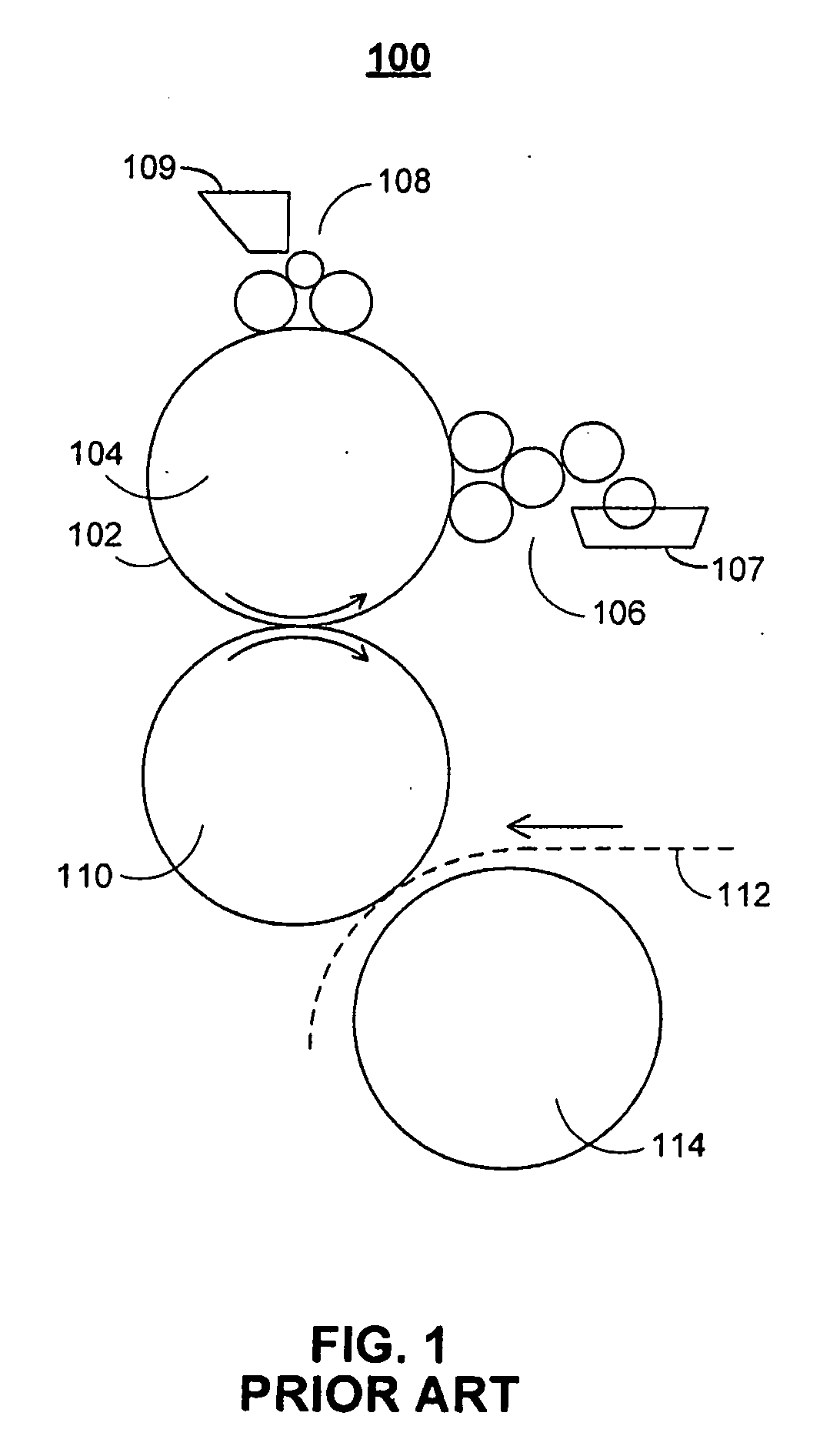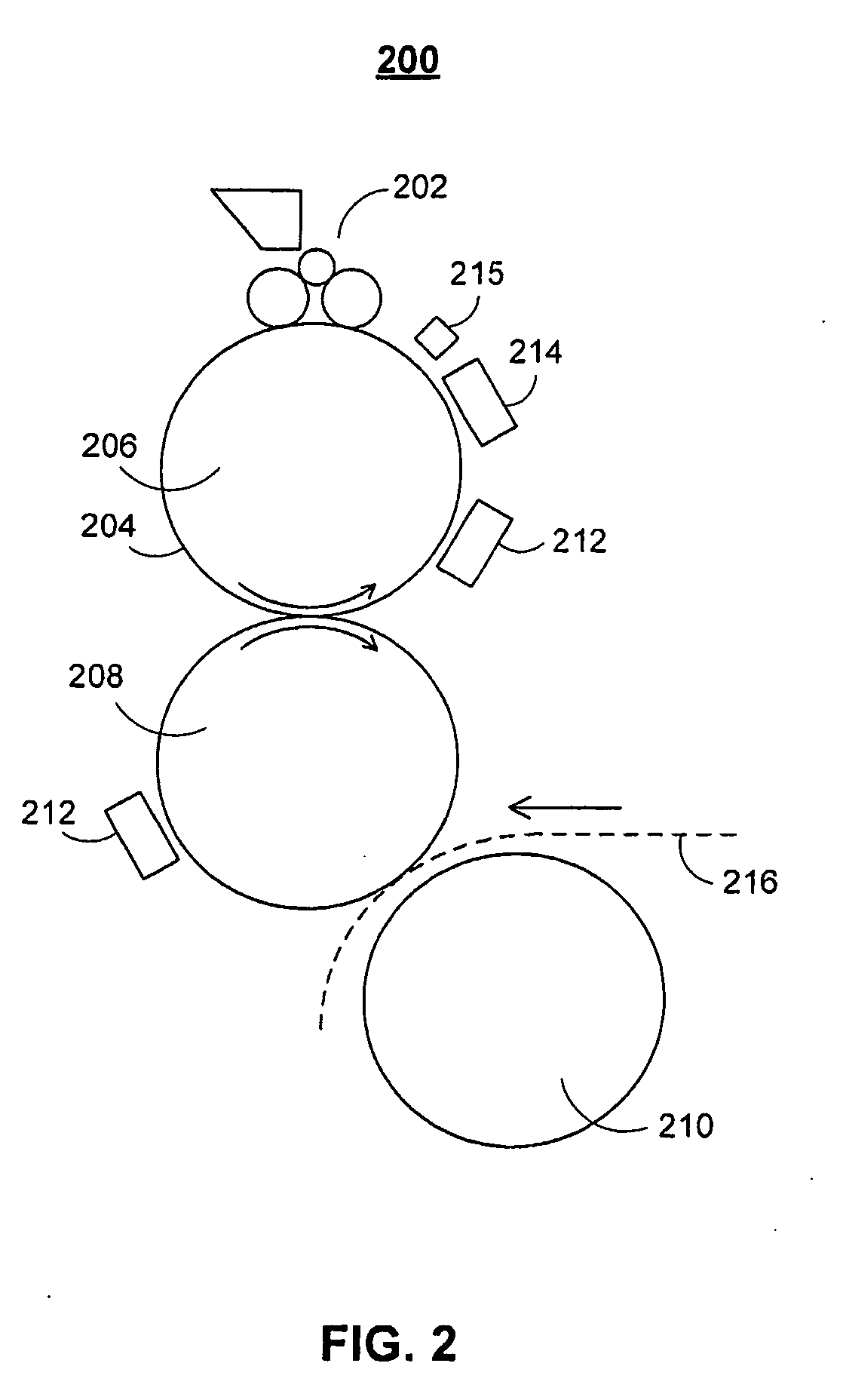Nanoparticle-based compositions compatible with jet printing and methods therefor
a composition and nanoparticle technology, applied in the direction of rotary lithographic machines, coatings, inks, etc., can solve the problems of inconvenient printing of jobs on lithographic or gravure presses, large overhead costs involved in plate making, and similar limitations of all printing techniques
- Summary
- Abstract
- Description
- Claims
- Application Information
AI Technical Summary
Benefits of technology
Problems solved by technology
Method used
Image
Examples
example 1
[0090]A nanoparticle-based blocking gating agent formulation useful in the present disclosure was prepared as follows:
7.11 wt %Huntsman B-60 7.11 wt %Snowtex-O ® from Nissan Chemicals 0.43 wt %Hydrochloric Acid from JT Baker85.35 wt %DI water
example 2
[0091]A second blocking gating agent formulation useful in the present disclosure was prepared as follows:
3.8 wt %Polyvinyl Pyrrolidone (K12) 4.8 wt %Polyoxyethylene(12) Tridecyl Ether91.3 wt %DI Water
example 3
[0092]A third blocking gating agent formulation useful in the present disclosure was prepared as follows:
10 wt %Polyoxyethylene(12) Tridecyl Ether90 wt %DI Water
PUM
| Property | Measurement | Unit |
|---|---|---|
| size | aaaaa | aaaaa |
| viscosity | aaaaa | aaaaa |
| dynamic surface tension | aaaaa | aaaaa |
Abstract
Description
Claims
Application Information
 Login to View More
Login to View More - R&D
- Intellectual Property
- Life Sciences
- Materials
- Tech Scout
- Unparalleled Data Quality
- Higher Quality Content
- 60% Fewer Hallucinations
Browse by: Latest US Patents, China's latest patents, Technical Efficacy Thesaurus, Application Domain, Technology Topic, Popular Technical Reports.
© 2025 PatSnap. All rights reserved.Legal|Privacy policy|Modern Slavery Act Transparency Statement|Sitemap|About US| Contact US: help@patsnap.com



